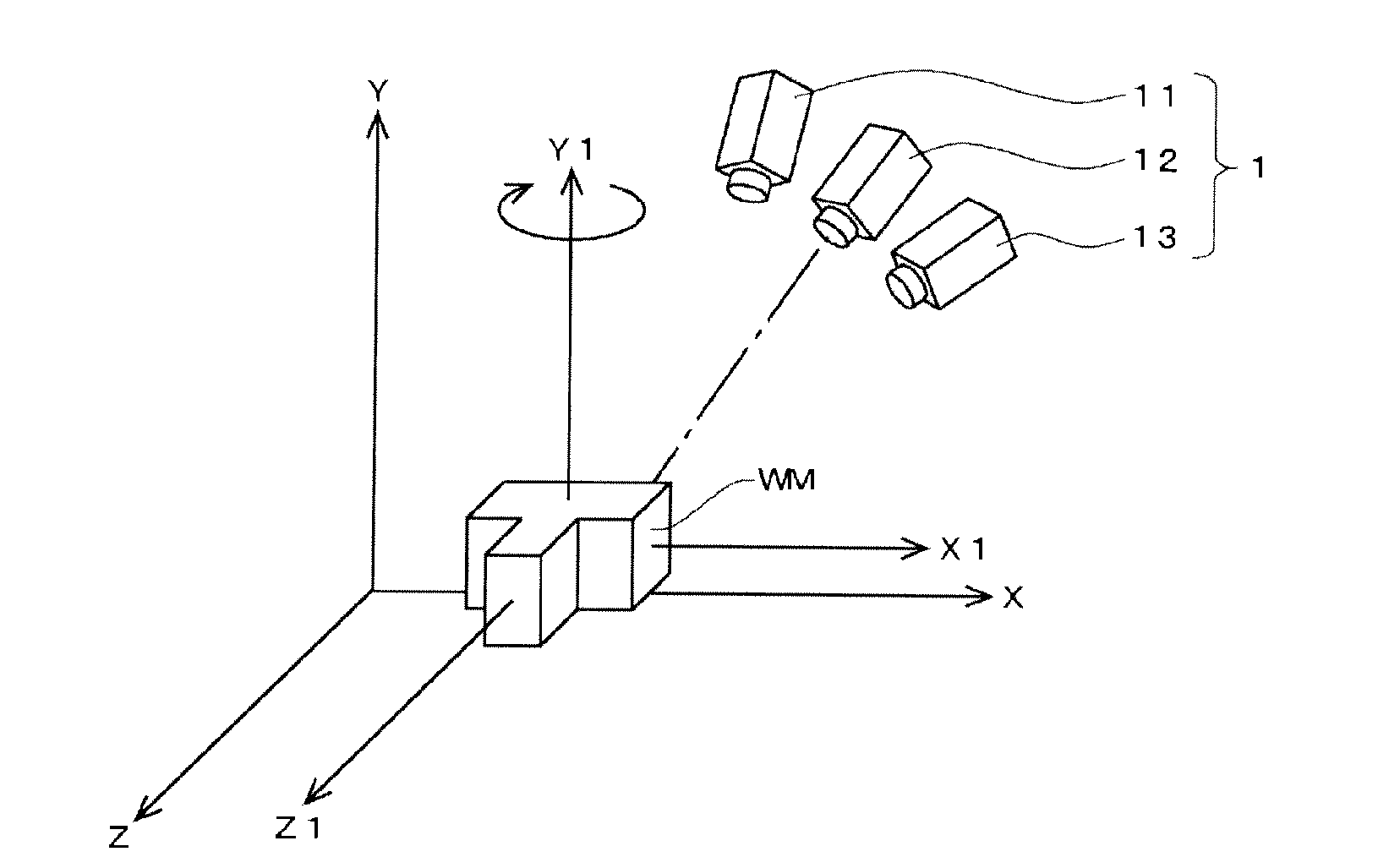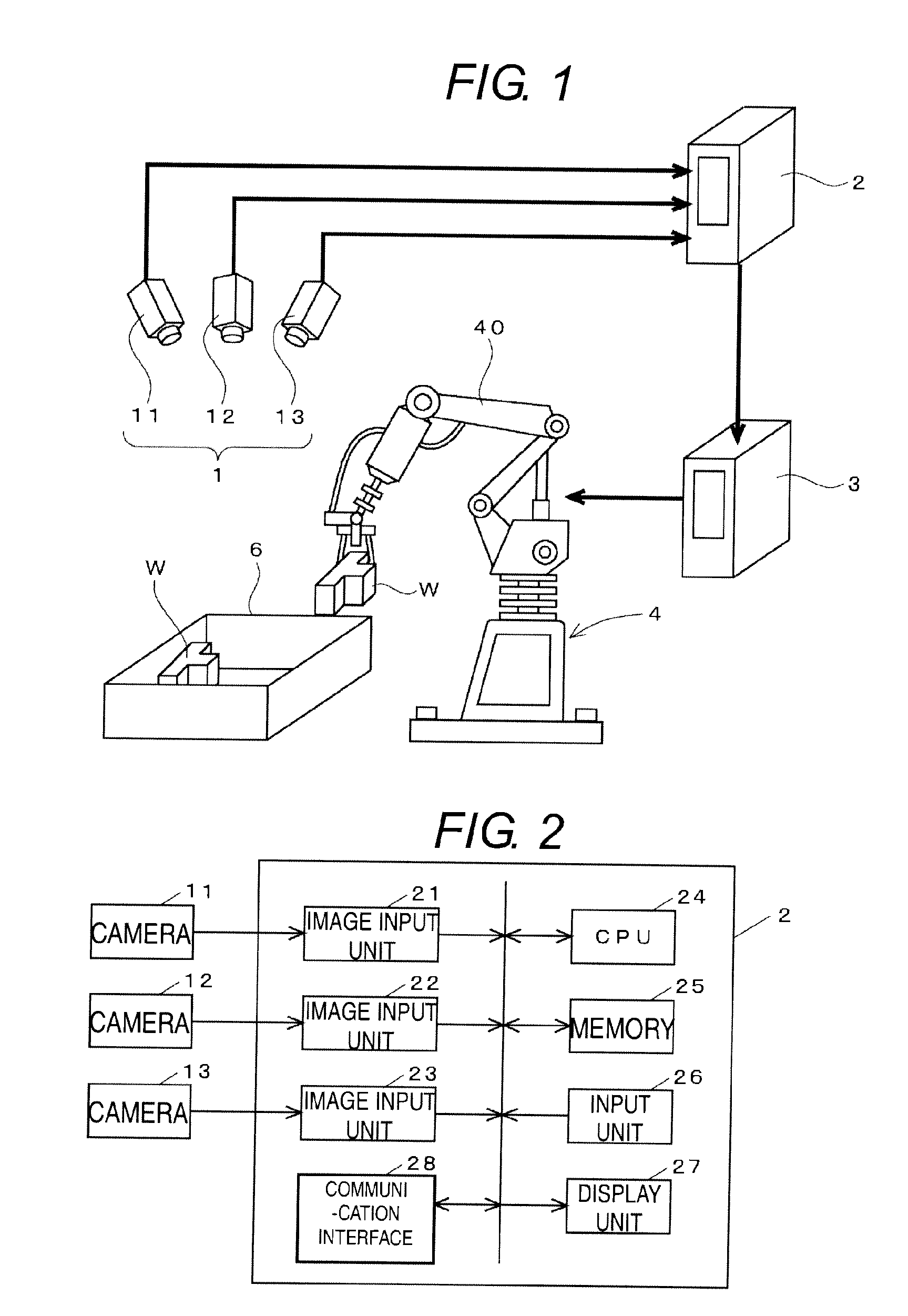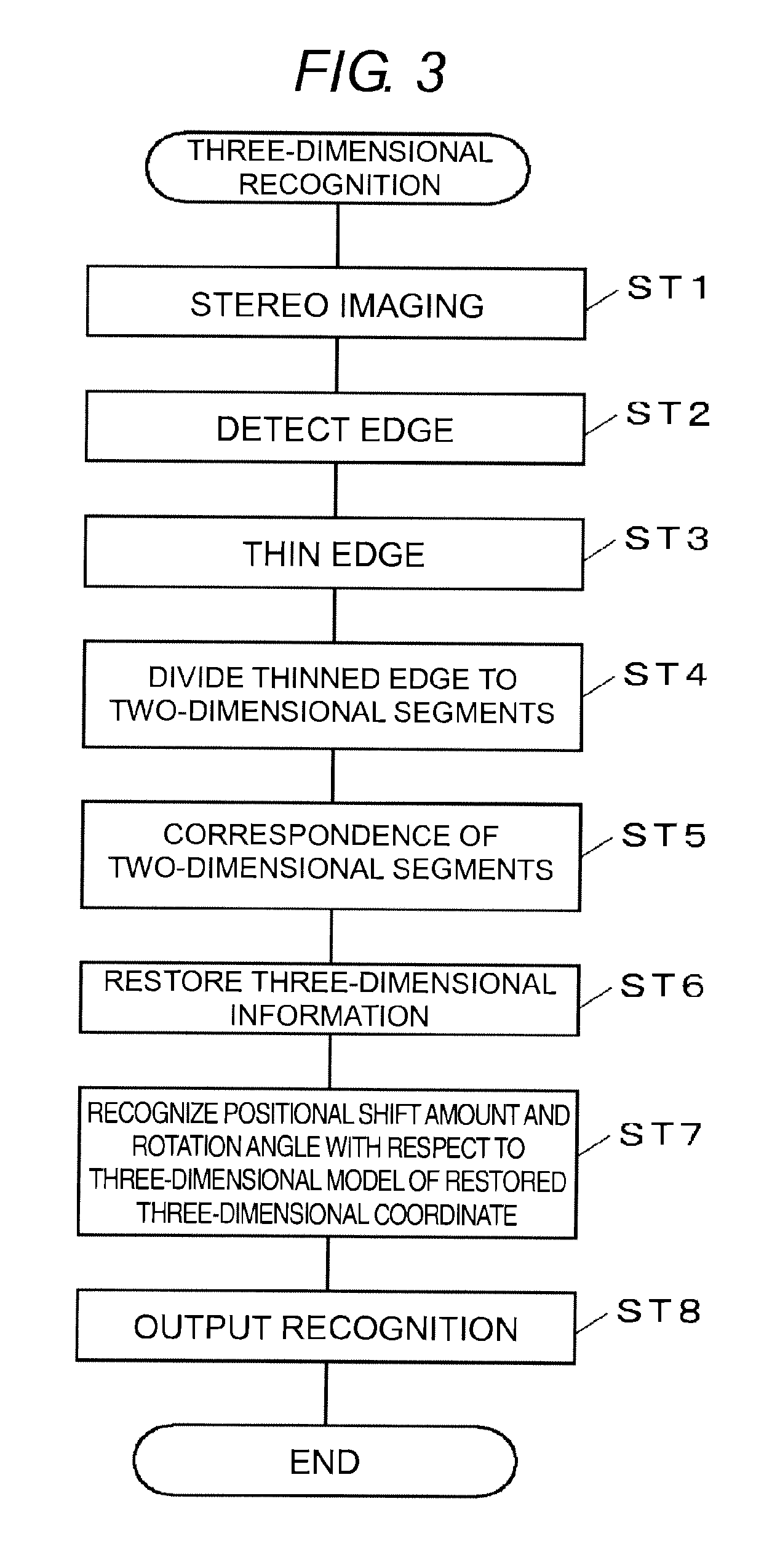Method of creating three-dimensional model and object recognizing device
a three-dimensional model and object recognition technology, applied in the field of creating three-dimensional models and object recognition devices, can solve the problems of inability to ensure the accuracy of the three-dimensional model, the inability to ensure the accuracy of the alignment, and the inability to achieve satisfactory accuracy of the final three-dimensional model, so as to achieve stably performed, ensure the accuracy of the three-dimensional model to be registered, and improve the effect of accuracy
- Summary
- Abstract
- Description
- Claims
- Application Information
AI Technical Summary
Benefits of technology
Problems solved by technology
Method used
Image
Examples
first embodiment
3-1) First Embodiment
[0080]To execute the three-dimensional recognition process described above, the three-dimensional model of the work W needs to be registered in the memory 25 in advance. In the object recognizing device of this embodiment, the three-dimensional model is created through a method of stereo measuring the actual model of the work W from various directions and integrating the three-dimensional information restored from each measurement result. This process will be described in detail below.
[0081]In the following figures, the actual model of the work W is denoted with a reference numeral WM, and the actual model WM is referred to as “work model WM” herein.
[0082]In the first embodiment, as shown in FIG. 4A, the stereo measurement of a plurality of times is executed while changing the orientation of the work model WM with respect to the stereo camera 1 with the position and the optical axis direction of the stereo camera 1 fixed. A predetermined number (two or more) of ...
second embodiment
3-2) Second Embodiment
[0130]In the second embodiment, the stereo measurement is executed with a triangular mark M attached to an appropriate location of the work model WM, as shown in FIGS. 9A and 9B in an aim of enhancing the accuracy of alignment between the three-dimensional information to be integrated to the three-dimensional model and enabling the accuracy of the created three-dimensional model to be more easily checked. The mark M is configured as a sticker, and is attached to a flat surface of the work model WM. The mark M has a size set to be smaller than the surface to which it is attached, and is colored with a color with which the contrast with the color of the base of the work model WM becomes clear.
[0131]In this embodiment as well, the three-dimensional model is created by rotating the work model WM at an arbitrary angle with the hand of the user to set a plurality of measurement points, and integrating a predetermined number (two or more) of three-dimensional informat...
PUM
 Login to View More
Login to View More Abstract
Description
Claims
Application Information
 Login to View More
Login to View More - R&D
- Intellectual Property
- Life Sciences
- Materials
- Tech Scout
- Unparalleled Data Quality
- Higher Quality Content
- 60% Fewer Hallucinations
Browse by: Latest US Patents, China's latest patents, Technical Efficacy Thesaurus, Application Domain, Technology Topic, Popular Technical Reports.
© 2025 PatSnap. All rights reserved.Legal|Privacy policy|Modern Slavery Act Transparency Statement|Sitemap|About US| Contact US: help@patsnap.com



